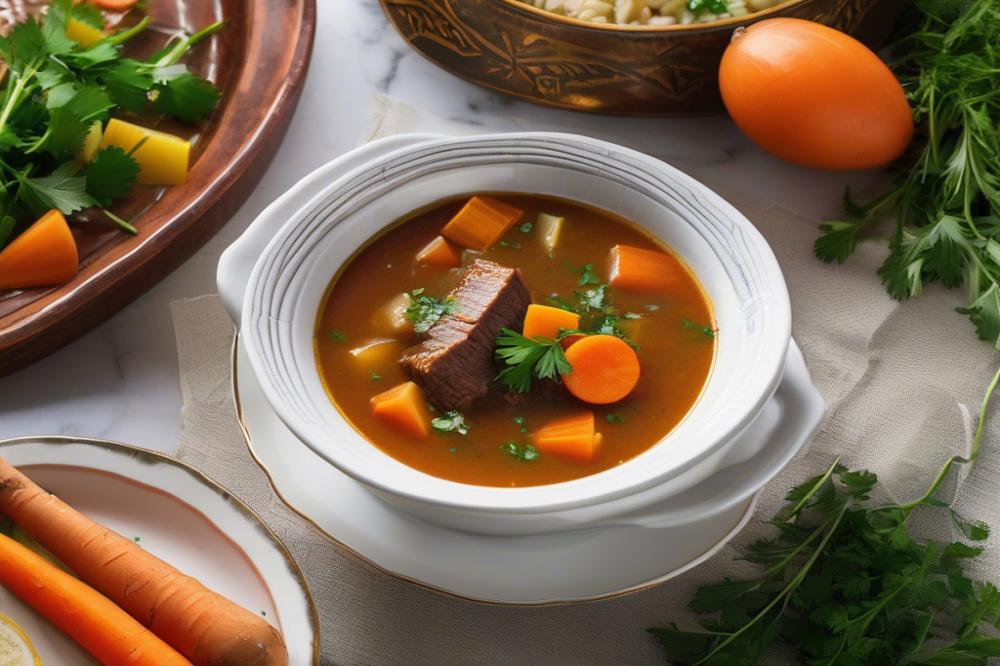Understanding Kawareh trotter soup
Kawareh soup stands as a cherished dish within Egyptian cuisine, embodying the heart of traditional meals. This soup is not just a meal; it reflects the culture, history, and flavors of the region. It often draws attention when discussing Middle Eastern dishes, particularly due to its unique combination of ingredients and methods. Beef trotters play a significant role in crafting the soup. Their gelatinous quality adds both substance and a distinctive taste.
Many people appreciate trotters for their ability to create a rich broth. Slow cooking allows the flavors to meld together beautifully. This method highlights the importance of patience in making soup, as the lengthy process results in a product that comforts the soul. Each bowl serves not only as nourishment but as a reminder of home-cooked meals and family gatherings. Overall, the hearty nature of this soup satisfies hunger while warming the heart.
Rich flavors permeate this beloved dish, making it an essential part of gatherings and celebrations. When trying Kawareh soup, diners can expect a taste that resonates with tradition. Each spoonful carries the essence of generations who have enjoyed and perfected the recipe. It’s not just food; it’s a connection to heritage. As we explore how to prepare this delicious meal, we’ll uncover its significance and the steps necessary to create a comforting bowl of goodness.
What is Kawareh Soup?
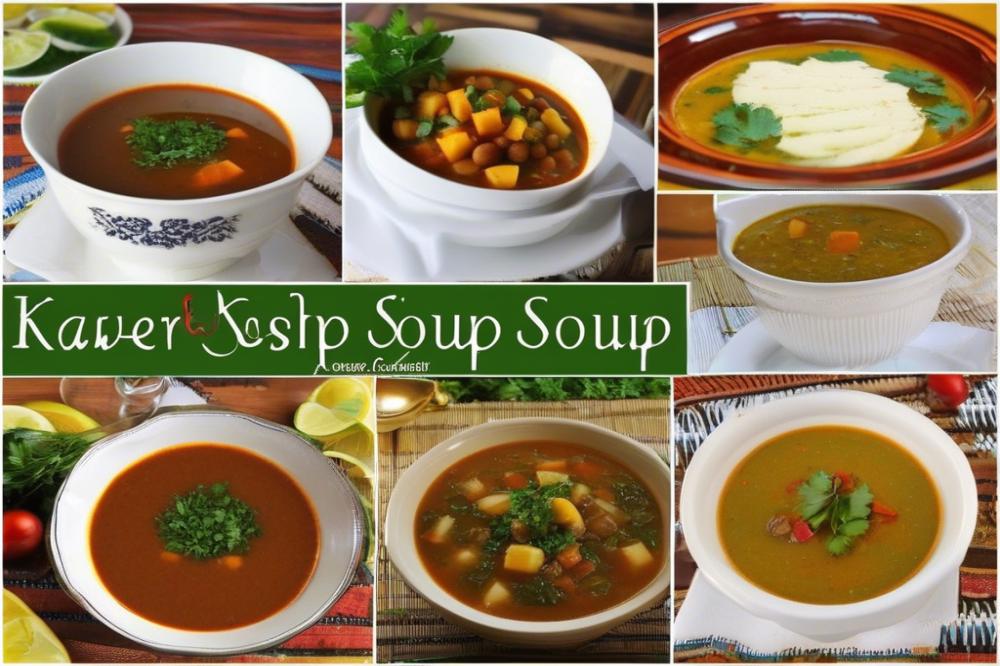
Kawareh soup is a traditional dish made from beef trotters. This hearty soup has deep roots in Egyptian cuisine. Over centuries, it has evolved into a beloved comfort food for many families.
Historically, trotters were utilized because they are economical and nutritious. Many rural communities depended on them for sustenance. As time passed, the preparation of this soup spread throughout the Middle East. Various cultures embraced and adapted the recipe, leading to multiple variations of trotters in their local cuisines.
Culturally, this dish represents more than just a meal. It embodies hospitality and warmth in Egyptian homes. Families often gather around the table to share this rich soup, especially during special occasions and holidays. The slow cooking method ensures that the flavors meld beautifully, creating a robust and satisfying dish. Sharing a bowl can evoke nostalgia and comfort, linking generations through shared recipes.
In many households, making soup is a cherished tradition passed down through the years. It reflects the home-cooked nature of Middle Eastern dishes, filled with love and care. This particular soup’s warmth and richness are perfect for bringing people together, making it an essential part of family life in Egypt. Enjoying a bowl of this meal not only nourishes the body but also the soul.
Ingredients for Kawareh Soup
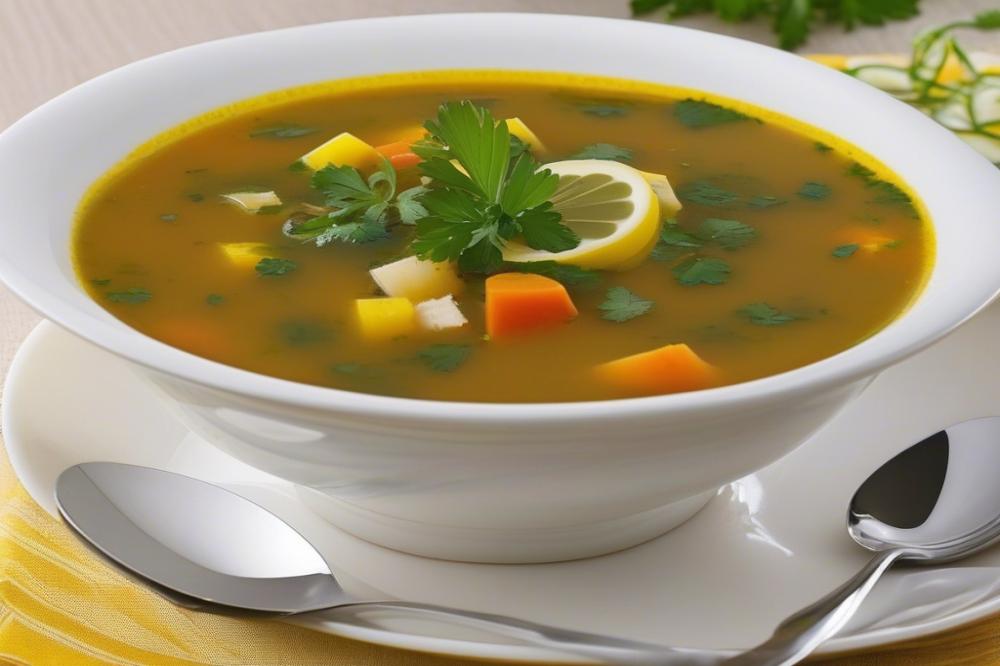
To create a delicious bowl of Egyptian Kawareh soup, gather the following ingredients in the specified amounts. This soup captures the essence of traditional recipes and showcases hearty, comforting elements of Egyptian cuisine.
- 1 kg beef trotters
- 1 large onion, chopped
- 2 medium carrots, sliced
- 2 stalks celery, chopped
- 4 cloves garlic, minced
- 1 teaspoon black peppercorns
- 1 teaspoon cumin
- 1 teaspoon coriander
- 1 teaspoon salt (to taste)
- 2 liters water or beef broth
- Optional: fresh herbs like parsley or cilantro for garnish
Beef trotters are the star of this dish. They provide a rich source of collagen, which contributes to the soup’s hearty texture. One kilogram of trotters is the perfect amount for a robust flavor. Onions add sweetness and depth to the mix, forming a strong base. A large chopped onion is essential for making soup that tastes truly delightful.
Next, two medium-sized carrots will add vibrant color and sweetness. Not to be overlooked, celery gives the dish a pleasant crunch and additional flavor. Chopping two stalks should suffice to blend well in the pot. Garlic brings a fragrant punch; therefore, use four minced cloves to elevate the taste.
Spices are crucial to achieving rich flavors. Black peppercorns, cumin, and coriander will infuse the broth with warmth and character. Use one teaspoon of each spice for a balanced profile. Adjust salt according to your preference, starting with one teaspoon to bring all flavors together.
Water or beef broth serves as the liquid foundation. Opt for two liters, depending on how thick you desire the soup to be. Finally, garnishing with fresh herbs, such as parsley or cilantro, adds a bright touch to this Middle Eastern dish.
Understanding the nutritional information of each ingredient can help you appreciate their benefits. Beef trotters offer protein and essential nutrients, while the vegetables add fiber, vitamins, and minerals. Spices like cumin and coriander provide antioxidants, making this dish both delicious and nutritious.
Method of Preparation
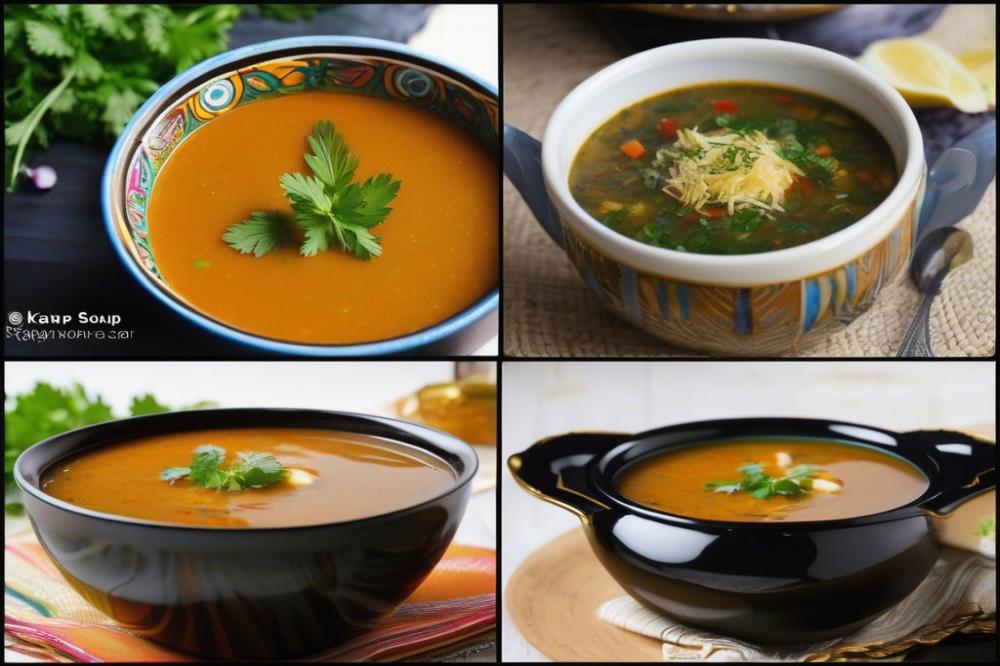
Step-by-step instructions for making Kawareh soup
Begin by gathering all necessary ingredients. You will need beef trotters, onions, garlic, celery, carrots, and assorted spices like cumin and coriander. Start by washing the beef trotters thoroughly. This removes any impurities and prepares them for cooking.
Next, chop the vegetables into small pieces. Aim for even sizes to ensure they cook evenly. In a large pot, add a bit of oil and sauté the chopped onions and garlic until they are golden brown. Adding them first will help release their flavors into the dish. After that, mix in the trotters and brown them for a few minutes.
Preparation of beef trotters and pre-cooking tips
Preparation is key for beef trotters. They require some special attention before cooking. First, soak the trotters in cold water for a couple of hours. This softens up the meat and helps with flavor absorption. Rinse them well after soaking to get rid of any residue. Then, cut them into manageable pieces. This makes them easier to handle and speeds up the cooking process.
Consider using a pressure cooker if you are short on time. This method reduces cooking duration significantly while locking in flavors.
Slow cooking process and optimal cooking times
Slow cooking is essential for achieving tender meat and a rich broth in your trotters soup. After browning the trotters, add enough water to cover them fully. Bring it to a boil, then reduce the heat to a simmer. Cover the pot and let it cook for at least three hours. This allows the flavors to meld beautifully. Stir occasionally and check the water level. Add more water if necessary.
If time allows, cooking for six to eight hours will enhance the richness even more. The longer you cook, the more the flavors develop.
How to achieve the best flavors through seasoning
Seasoning profoundly impacts the final taste of the soup. After about an hour of cooking, incorporate spices. A blend of cumin, coriander, and pepper works nicely. Taste as you go along to adjust according to your preferences.
Do not forget to add salt gradually. It enhances the overall flavor but should be carefully measured to prevent overpowering the dish. Fresh herbs like parsley or cilantro can be added at the end for a burst of freshness.
Tips for serving and presentation
When ready to serve, ladle the beautiful trotters soup into bowls. A sprinkle of fresh herbs adds a touch of color. You can accompany the soup with fresh bread or rice to make it more filling.
Consider using wide bowls to better showcase the hearty soup. Place a few slices of lemon on the side. It offers a refreshing contrast to the rich flavors. Enjoy your meal with family. Sharing food enriches the experience of enjoying traditional recipes from Egyptian cuisine.
Health Benefits of Kawareh Soup
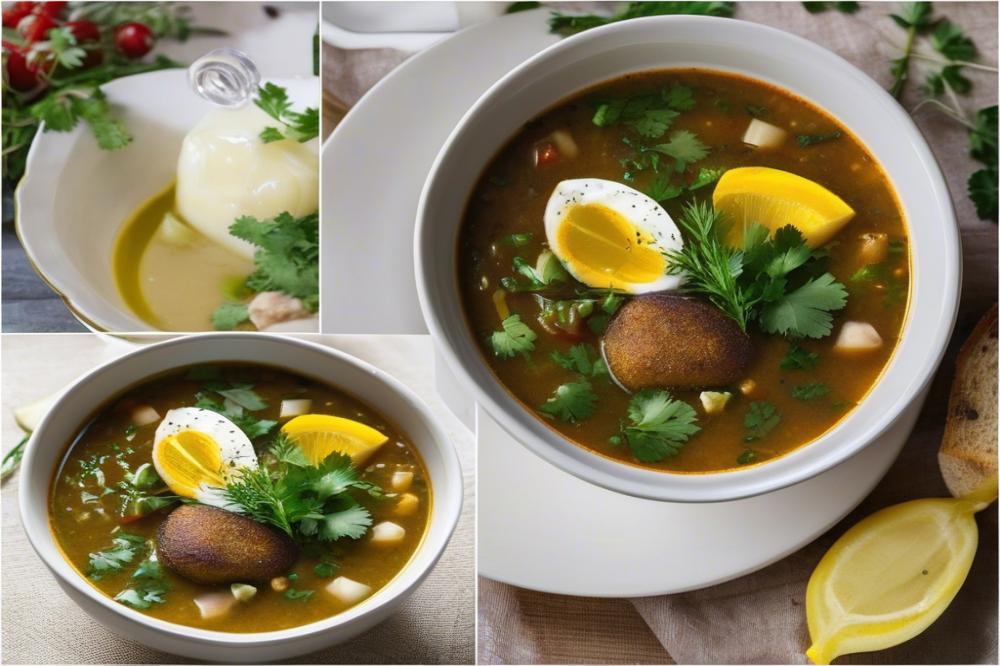
Kawareh soup offers numerous nutritional advantages due to its ingredients. Beef trotters serve as the primary component. They are packed with protein and essential vitamins. Additionally, trotters contain high levels of collagen, which is beneficial for skin, joints, and overall health. The ingredients in this hearty soup provide not just sustenance but also vital nutrients that support the body.
Slow cooking is an excellent method for preparing this dish. The process allows flavors to meld beautifully over time. This technique also ensures that nutrients from the trotters are extracted fully into the broth. As a result, the soup becomes both delicious and nutritious. During this time, the collagen breaks down, creating a gelatinous texture that enhances the soup’s richness.
Incorporating Kawareh soup into your diet can seamlessly fit with a balanced nutritional plan. It represents comfort food at its best. Traditional recipes often emphasize the heartiness of the dish, making it perfect for family gatherings or cold evenings. Moreover, enjoying this soup alongside a fresh salad or whole-grain bread can create a more complete meal. Middle Eastern dishes frequently highlight the significance of wholesome ingredients, and this soup exemplifies that beautifully.
Variations and Serving Suggestions
Traditional Ways to Serve Kawareh Soup in Egyptian Homes
Many Egyptian families enjoy making trotters soup for special occasions and family gatherings. Traditionally, this hearty soup is served hot in deep bowls. It is common to garnish the dish with fresh herbs, like cilantro or parsley, to add brightness. Some families might add a splash of lemon juice to enhance the rich flavors. It’s not just about the soup; serving it with a side of rice or freshly baked bread is also popular.
Possible Variations and Ingredient Substitutions
Variations of this dish can be found throughout Egyptian cuisine. For those who prefer a milder taste, using lamb trotters instead of beef can offer a different flavor profile. Some cooks add lentils or chickpeas for extra protein and texture. Different spices can also be used to tailor the dish to personal preferences. Experimenting with ingredients like turmeric or cumin can create unique dimensions in taste.
Pairing Suggestions with Bread or Side Dishes
Pairing this soup with the right sides is essential. A thick, crusty bread, such as Egyptian baladi bread, complements the trotter soup perfectly. This allows for soaking up the broth. Additionally, serving a tangy salad with cucumbers and tomatoes helps balance the rich soup. Other options include pickled vegetables for a zesty contrast.
Other Middle Eastern Dishes that Complement This Soup
Many Middle Eastern dishes blend well with trotters soup. For instance, serving it alongside a plate of kebabs enhances the meal’s overall experience. Additionally, dishes like stuffed grape leaves or mujadara can provide variety for a full spread. A light, refreshing tabbouleh salad can also balance the heavier flavors. These pairings make for a delightful feast that showcases the best of Egyptian cuisine.
Final Thoughts on Kawareh Soup
The essence of this flavorful dish lies deep within Egyptian cuisine. Trotter soup has been a staple for many generations, cherished for both its comforting warmth and rich flavors. Having a bowl evokes a sense of tradition, connecting us to the past and the generations who prepared it with love and care.
Cooking this dish at home offers an opportunity to dive into a unique culinary experience. Anyone willing to try making it will discover an array of tastes just waiting to unfold. Enjoying the result can be incredibly rewarding, especially when shared with family and friends around the table.
Traditional recipes like Kawareh soup play a vital role in preserving our culinary heritage. They tell stories of culture and history, reflecting the identity of a community. As we embrace these time-honored dishes, we also honor the methods and ingredients that have passed through countless kitchens over the years.
So, why not take a step into this culinary adventure? Bringing a piece of Egypt into your kitchen can be a delightful experience. You might find not just a meal but also a connection to a tradition that spans ages.

